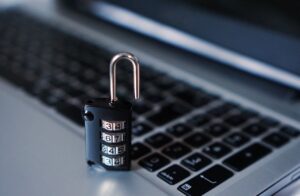
Source: Pixabay
In the context of the current pandemic and the latest massive cyberattacks, IT security is more relevant than ever in our daily lives. With many people working from home and using cloud applications to access corporate data, the risk of unauthorised access to this data is growing. . Passwords can be stolen in various manners, ranging from looking over one’s shoulder, a break-in at a service provider on the Internet to malware. Passwords are particularly susceptible to being stolen. Additionally, if you use the same password for multiple services, the quantity of stolen data might be massive. What can we do to ensure our data remains secure?
Multifactor-authentication quickly became an essential security element in online banking. A growing number of applications are now making use of it.
What is Multifactor-Authentication?
As the name suggests, multifactor-authentication is a method of authentication in which users have to prove their identity through several separate processes. Users no longer only enter a username and password when logging in. They also have to identify themselves with an additional authentification factor. This can be done in a number of different ways. The most common options are knowledge (for example, a password), possession (for example, a token, an app or a bank card) and biometric features (for example, a fingerprint or facial recognition). With multifactor-authentication, the person has to identify themselves using more than one of these factors. When logging in with a password, for example, the user receives an SMS with an additional access code on their smartphone. Registration is only possible if both identification elements are combined.
Why Do We Need Multifactor-Authentication?
Multifactor-authentication provides a higher level of protection against unauthorised access. If one authentification factor is compromised, attackers must break through at least one other security barrier before reaching their target. Regarding data security, each additional barrier is a further safety factor. For users, the implementation of an additional authentification factor is quite simple and only requires a short activation and set-up. Especially in HomeOffice, multifactor-authentication plays a particularly important role due to the frequent use of corporate applications via private devices.
Needless to say, IT security is at the top of the IT Center agenda as well. In order to provide greater protection from now on, multifactor-authentication will also be introduced for those IT Center services that require increased data security. We will, of course, inform you about these changes on our social media channels. Stay tuned for more information!
Responsible for the content of this article is Stéphanie Bauens.




